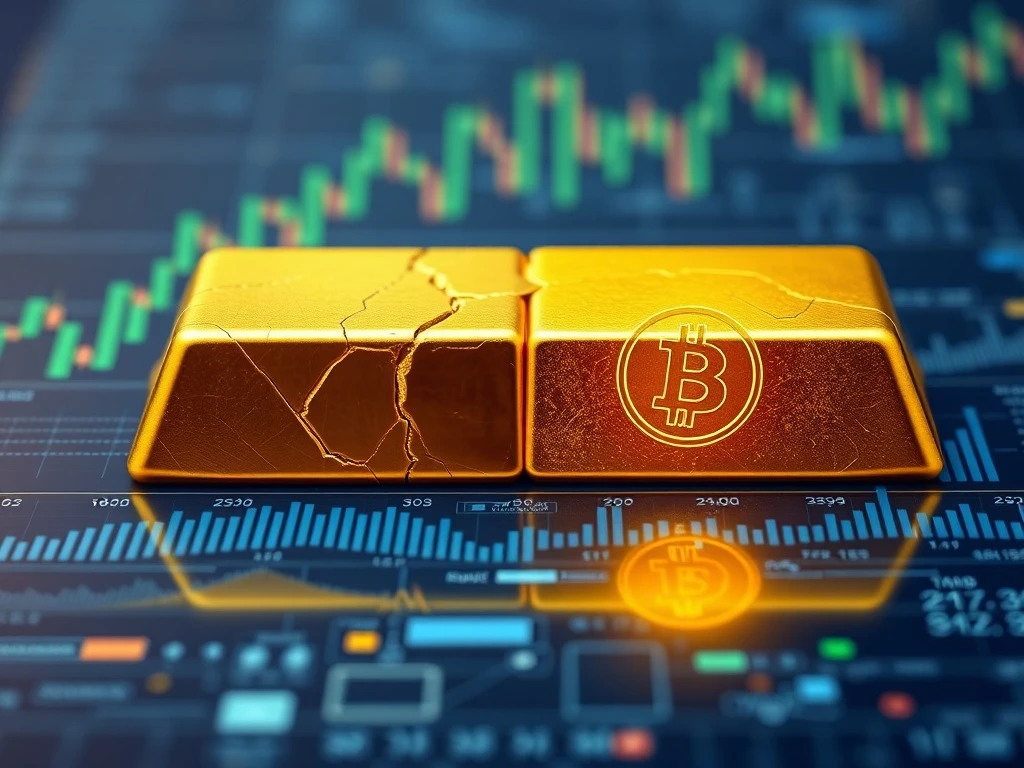Unlocking Real Yield: Why DeFi Gold Investments Are Finally Evolving

For many years, the promise of decentralized finance (DeFi) captivated investors. It offered new ways to engage with traditional assets. However, a significant disappointment emerged within the sector. Specifically, DeFi gold products consistently underperformed, delivering less than 1% in yields. This starkly contrasts with traditional finance, which often generates 3%-5% on the same asset. This article explores the root causes of these low returns and highlights the innovative solutions now emerging to transform crypto investments in the gold sector.
The Illusion of Real Yield in DeFi Gold
Many early DeFi gold protocols failed to generate genuine income. Instead, they relied on printing new tokens. These platforms frequently dangled attractive double-digit annual percentage rates (APYs). Such rates aimed to entice deposits, yet they depended on issuing new tokens rather than creating new value. Consequently, when token prices dropped or emissions ceased, yields often collapsed completely.
This approach did not create value. It simply redistributed existing value through inflation. Many observers recognize this as a classic Ponzi structure, disguised as innovation. This pattern repeated across the gold DeFi landscape. Protocols launched unsustainable emission rewards to attract total value locked (TVL). They then watched yields plummet once market realities set in. Token emissions create an illusion of productivity. However, they ultimately destroy long-term value. They dilute existing holders when protocols cannot generate real yield from their operations.
Forced Complexity Undermines Crypto Investments
Gold investors typically seek straightforward exposure to gold. However, DeFi often forces them into complex, volatile asset pairs and liquidity pools. These structures frequently lead to suboptimal outcomes. For instance, during gold rallies, liquidity providers (LPs) often suffer impermanent loss. Their gold automatically sells for stablecoins, causing them to miss the upside they initially invested to capture. These LP structures also prove capital inefficient. They force half of an investor’s funds into low-yield stablecoins instead of pure gold exposure.
The risk-reward calculation becomes illogical. Investors accept impermanent loss risk and reduced gold exposure. Yet, they receive yields barely exceeding what they could earn by holding stablecoins directly. This unnecessary complexity deters serious crypto investments in the gold sector. It also prevents the widespread adoption of tokenized gold products.
Missing the Opportunity with Tokenized Gold
DeFi protocols historically lacked the necessary infrastructure. This prevented them from replicating traditional finance’s sophisticated strategies at scale. For example, gold futures often trade at premiums to spot prices. This is especially true in contango markets. Sophisticated traders in traditional finance capitalize on this spread. They hold physical gold and simultaneously short futures contracts. This is precisely the type of market-neutral strategy that DeFi should excel at automating.
However, due to these infrastructure gaps, institutional players continue to earn attractive returns on gold. Meanwhile, DeFi investors remain stuck with inflationary rewards and forced complexity. As a result, substantial capital stays within traditional finance. DeFi, conversely, struggles for market share. The potential of tokenized gold remains largely untapped, awaiting more robust and intelligent protocols.
The Path Forward: Real Yield Through Arbitrage Strategies
Fortunately, new protocols are now emerging. They directly address these fundamental flaws. These innovators focus on market-neutral arbitrage strategies instead of relying on token printing. By capturing contango spreads, they generate genuine, sustainable returns. Investors can now gain pure gold exposure with institutional-grade yields. This approach democratizes strategies previously requiring high minimums, often $5 million, and direct institutional relationships. Now, these hedge fund opportunities are accessible with as little as $1,000 and a digital wallet.
Key features of these advanced protocols include:
- Market-Neutral Arbitrage: Capturing spreads between spot and futures prices.
- Real Yield Generation: Income derived from actual market activity, not token emissions.
- Pure Gold Exposure: Eliminating the need for volatile asset pairs.
- Accessibility: Lower entry barriers for institutional-grade returns.
Simplifying Crypto Investments for Gold Exposure
The best new DeFi products prioritize simplicity. They eliminate unnecessary complexity, giving gold investors direct exposure. This avoids forced diversification. Single-sided staking models are becoming prevalent. They preserve the investor’s core thesis. At the same time, they generate real yield through sophisticated arbitrage strategies. This shift explains why tokenized gold historically underperformed decades-old physical gold strategies. The industry previously prioritized rapid deployment and TVL growth over sustainable economics and actual returns.
Market Consequences and the Adoption Catalyst
The historical underperformance of gold DeFi reflects broader issues. It highlights how many protocols approach yield generation. Too many prioritize TVL growth above sustainable economics. They optimize for launch metrics rather than long-term value creation. Real solutions demand significant infrastructure investment. This includes proper derivatives trading capabilities, robust risk management systems, and institutional-grade execution. These are far more challenging to implement than simply launching another liquidity mining program.
However, the market is maturing rapidly. Investors increasingly recognize the difference between real yield and token emissions. They now demand actual value creation over inflated APY numbers. This shift is critical. The next wave of DeFi adoption will likely stem from real yield, not speculation. Traditional finance faces increasing regulatory pressure. Institutional investors, therefore, seek alternatives. They desire comparable returns with enhanced transparency. Gold represents an ideal testing ground for these innovations. It is a well-understood asset class with documented arbitrage opportunities and proven demand for yield.
The question is no longer whether gold DeFi will succeed. Instead, it is which protocols will finally deliver on its original promise. They must leverage existing technology, proven strategies, and a ready market. The gold rush continues, and this time, it just might strike gold for investors seeking genuine returns in their crypto investments.







